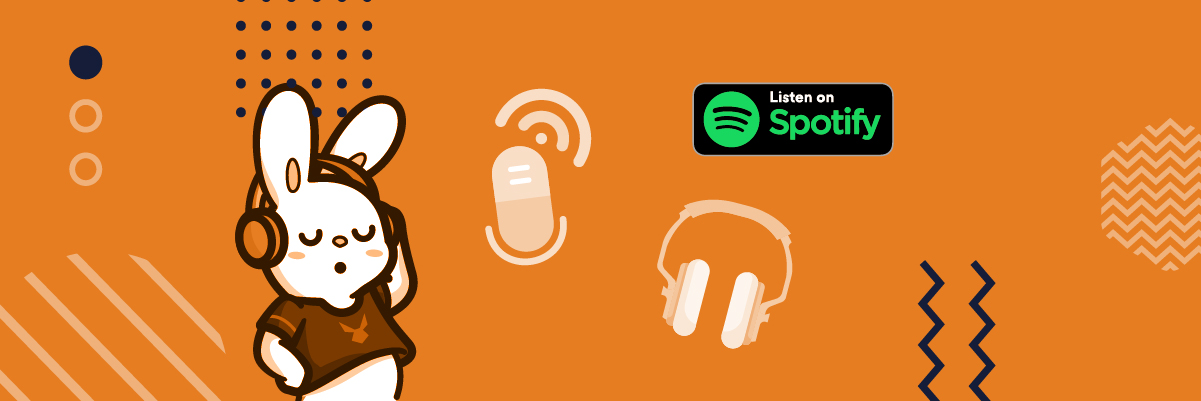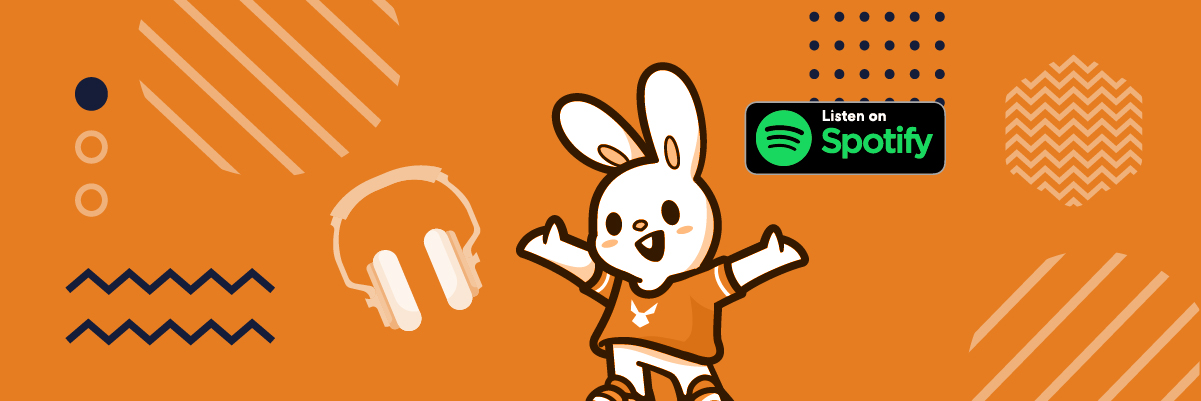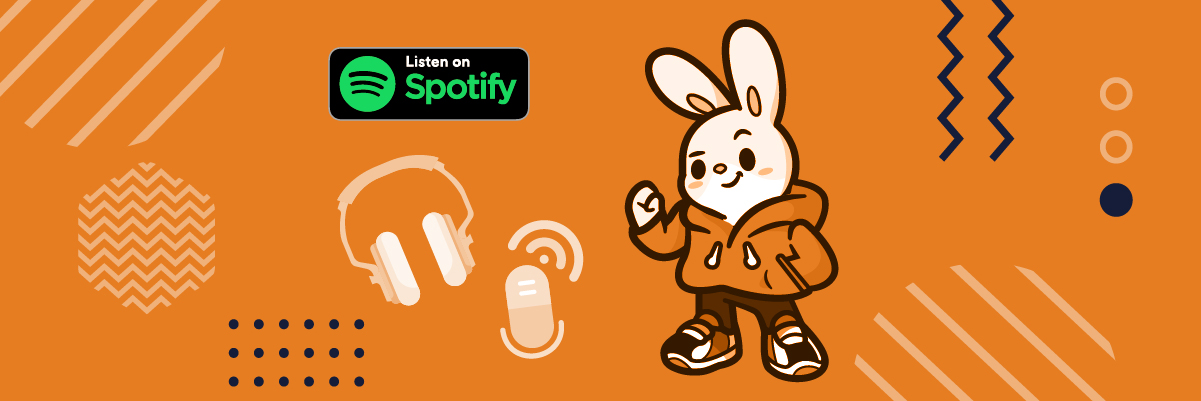Spotify is currently the biggest and most profitable streaming service. One of the reasons for that is a very detailed methodology of operation and innovations this service introduces and practices. One of those elements is Spotify badges, among which is the ‘listen on Spotify’ badge. What does this involve?
According to the latest numbers presented by Business of Apps, in the last quarter (Q4) of 2020, Spotify had 246 million users and 155 million subscribers around the world. The leaders in both categories by region were Europe and U.S.
The service currently holds over 70 million songs and adds new ones at a rate of 60,000 per day. The company’s revenue in 2020 was $10.8 billion, with an operating loss of $696 million.
With Spotify and other streaming services constantly growing, it is no wonder that many businesses flock to this service. They use the multitude of opportunities that Spotify for brands, Spotify Commercials, and Spotify ads have to offer.
What currently gives Spotify the edge in the streaming game is the set of innovations the company keeps introducing in its service palette. As Screen Rant points out, since its inception, Spotify has added and expanded dozens of features. Such features include using a set of powerful algorithms. These algorithms use music and personal details of users to shape their listening experience, Spotify codes Wrapped playlists, and others. Spotify badges are among those elements.
Spotify has two sets of badges. One is of service to this service’s listeners. The other is beneficial for the content programmers – artists and podcast creators. Businesses use the latter to connect with Spotify. It is artists and podcast creators that use the service of listen on Spotify badge.
Listen on Spotify badge has a set of specific guidelines
For artists, creators, record labels, and other businesses, Spotify has developed specific guidelines for design and branding. These guidelines also cover the listen on Spotify badge (Spotify). Here are the key points from these guidelines:
- Content available through Spotify is owned by many different rights holders. If you use any Spotify metadata (including artist, album and track names, album artwork, and audio playback) it must always be accompanied by the Spotify brand.
- “To comply with our licensing agreements, you must always attribute content from Spotify with the logo. In partner integrations, you should always use our full logo (icon + wordmark). We do allow using only our icon if it’s featured as an app icon on the app screen of a device.”
- The guidelines also specify that “you may only use the artwork provided by Spotify.” Also that, “artwork must be kept in its original form.”
- Track, artist, playlist, and album titles must always be presented with the metadata provided by Spotify. For podcasts, two sets of metadata need to be supported: title of the episode and podcast name.
- The more detailed elements of these guidelines are available at the above Spotify link.
Users can also direct listener traffic to Spotify
There is also a way in which users themselves can direct traffic to specific music or podcasts on Spotify. They can do this through Spotify Codes. Spotify introduced these Codes as a way to get users to share music with friends and family in 2017.
Pocket-lint points out how Spotify Codes work. They generate a unique code of a track, album, or playlist you want to share. Someone else can then scan that code. This will instantly take them to the music so they can listen to the same thing.
Each track, artist, album, and playlist can have its own Spotify Code. There are no limits to what a user can share.
Spotify Codes are available to free and Premium subscribers. To generate a code for something you want to share, you need to click on the three dots next to the heart icon on whatever it is you want to share. All albums, tracks, playlists, and artists have this button as an option.”
At the same time, artists, record labels, and brands can print Codes onto promotional advertising boards and posters and users can scan them in exactly the same way.

How can artists and podcasters use listen on Spotify badge?
What about the artists and podcasters themselves? They can present the listen on Spotify badge on their websites, Facebook pages and others. Of course, this has to be done based on the above guidelines.
But, there are some limitations to this possibility. “Only some music Pages with more than 5000 likes are eligible to request the addition of a music catalog and Listen button. These features allow people to listen to your music with a single click from your Page. You must be an official representative of the artist and have an existing music catalog on a supported service, such as Spotify or Rdio.”
To count a song as “one play” or “one stream,” someone has to listen to a song for 30 seconds or more. When you restart a song, it will count as a play as long as you listen to it for 30 seconds. Skipping the last 5 seconds of a song does not hurt the artist. Offline listens are counted and sent to Spotify’s server the next time you connect to the Internet. This means that private listening mode is also counted.
Some Spotify discussion groups have noted though that some artists do not have 5,000 likes but still have the listen on the button available on their online sources. Spotify has to yet divulge its criteria for this “mystery,” if one really exists.
Some of the reasons behind Spotify’s success
The fact that Spotify is currently the leading streaming service is big enough for musicians, record labels, podcasters, and businesses to connect with the service. That includes the use of listen on Spotify badge. Dave Gershon, one of the hi-tech experts explains the reasons for this in his detailed article on OneZero.
He explains that while competitors like Apple Music, Amazon Prime Music, and others “rely on a mix of paid humans and community-created playlists, Spotify’s main differentiating factor is the level of customization and expansion of music knowledge offered to customers.”
The company has created algorithms to govern everything from your personal best home screen to curated playlists like Discover Weekly, and continues to experiment with new ways to understand music, and why people listen to one song or genre over another.
Spotify’s home screen is governed by an A.I. system called BaRT (“Bandits for Recommendations as Treatments”). “The BaRT system is Spotify’s central balancing act. Its whole purpose is to give you music that Spotify is confident you’ll like, based on your previous listening activity. But Spotify also has to drop in new, fresh music so you don’t get stuck in a loop of listening to the same thing all the time.
The system can be boiled down to two concepts: Exploit and explore. When Spotify exploits, it’s using the information it knows about you, the user. It takes into account your music listening history, which songs you’ve skipped, what playlists you’ve made, your activity on the platform’s social features, and even your location. But when Spotify explores, it uses the information about the rest of the world, like playlists and artists similar to your taste in music but you haven’t heard yet the popularity of other artists, and more.”
More reasons to use listen on Spotify badge
As Screen Rant (above) notes, Spotify continues to seek out innovation wherever it can. Its so-called Wrapped playlists are one of the reasons behind the success of listen on Spotify badges.
Spotify presents Wrapped playlists for each calendar year. The company uses these to power new elements such as users’ binge-worthy podcasts and top genres of each year.
To do that, “Spotify gathers data from qualified users. That means anyone who has created a Spotify account by November 15th, listened to at least five different artists, and at least 30 different songs. Streams are only counted if a user listens for at least 30 seconds and, for those users listening to downloaded tracks and playlists, offline plays will be counted the next time they go online, which they have to do at least once every 30 days to confirm their subscription anyway. With Wrapped being mobile-only for the first time, users will need to head to the homepage of the Spotify app, and tap the, say, ‘2020 Wrapped’ banner, or search for ‘2020 Wrapped’ if it’s not visible. Once in the Wrapped section, users can tap ‘See how you listened in 2020’ to view their personalized 2020 Wrapped experience, or they can go straight to their curated playlists.”
Users can also now earn badges for such achievements as ‘Tastemaker’ if their playlists gained followers ‘Pioneer’ if they streamed a song before it hit 50,000 streams, and ‘Collector’ if they added a certain number of songs to their playlists. As always, users will have a playlist compiling a list of their 100 top-streamed songs from 2020. However, this year Spotify also offers a ‘Missed Hits’ playlist, with songs similar to their streaming habits, and ‘On Record,’ a compilation of users’ top artists and related podcasts.

Concluding remarks
There are some compelling reasons why content creators, users, and businesses would want to use the capabilities that listen on Spotify badge and other innovations introduced by this leading streaming service.
Spotify has very specific requirements for making this capability possible. But, the company’s other advancements, like the use of artificial intelligence algorithms, Wrapped playlists and others make the use of listen on Spotify badge advantageous.
Presenting music, preparing a podcast, or ads and commercials for Spotify often require the engagement of specialized freelance professionals. Here at BunnyStudio, we can offer an extensive list of such professionals, who can also help you with listen on Spotify badges.










